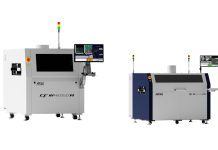With the rapid development of new energy vehicles, ADAS (Advanced Driver Assistance Systems), and intelligent cockpits, the complexity and integration of automotive electronic systems continue to increase. As the core process of electronic component assembly, the stability and reliability of surface mount technology (SMT) have become the key to ensuring the functional safety of the entire vehicle. Especially under harsh working conditions such as high temperature, high humidity, and high vibration, the quality requirements of automobile components are much higher than consumer electronics standards. The electrical stability, packaging adaptability, and long-term supply capacity of components are becoming important variables affecting the entire vehicle’s performance.
Faced with such challenges, it is necessary to systematically upgrade the selection of automotive-grade components and supply chain management. By selecting AEC-Q certified components, optimizing BOMs, and building a full-process control system, risks such as package mismatch and batch fluctuation can be avoided, ensuring the stability and consistency of the SMT process.
Packaging Challenges in Extreme Environments: Thermal Stability and Mechanical Stress Control
In powertrain systems (such as ECU, BMS, and motor controllers), circuit boards need to work in an environment of up to 125°C for a long time, and even during the fast charging process of electric vehicles, the local temperature rise can exceed 150°C. This places strict requirements on the packaging stability and welding reliability of the device itself.
For example, the voltage monitoring IC in the battery management system (BMS) often fails welding due to thermal shock during temperature cycle testing. Engineers selected the HTSSOP package with better thermal stress distribution to meet this challenge. They added thermal vias and reinforced pad structures to the PCB design to improve welding strength effectively. This solution demonstrated excellent stability in long-term temperature, humidity, and bias tests.
In the selection of power and protection devices, by adopting devices such as ST’s L7987 (AEC-Q100 certified LDO, temperature resistance of 150°C), Infineon’s AUIRFS8409-7P (automotive-grade MOSFET, RDS(on)=0.7mΩ), and supporting supply with integrated supply chain resources, the risk of thermal failure under extreme working conditions can be significantly reduced.
Signal integrity and low power design in intelligent driving
With the popularization of L2+ and above autonomous driving systems, the data exchange between modules such as sensors, cameras, radars, and main control chips has increased significantly, which puts higher requirements on wiring density, signal integrity, and power consumption management.
The LVDS data channel often causes video signal jitter when designing ADAS controllers with visual fusion functions due to ESD interference. In engineering practice, transient suppression diodes (such as ON Semiconductor’s automotive-grade TVS series) with a response speed of <1ns and low capacitance (<0.5pF) are widely used to ensure signal integrity. At the same time, LDO devices with a quiescent current as low as 2µA (such as ROHM’s low IQ series) are often configured around the MCU to reduce standby power consumption and extend the vehicle’s sleep endurance.
PCB layout and package compatibility: multi-module collaborative assembly optimization
The innovative cockpit system integrates navigation, voice recognition, infotainment, and other functions. It has a large number of internal circuit boards and limited space. Achieving the coordinated layout of multifunctional modules in a restricted space has become a new challenge in SMT design.
In the design of smart cockpits, multi-channel CAN/LIN communication modules often use a small SOT-23 and QFN hybrid packaging solution, combined with ultra-thin EMI filters and automotive-grade inductors, which effectively saves board space and improves filtering efficiency. In addition, with the help of BOM services such as those provided by WIN SOURCE, the design team can predict package compatibility and welding windows in the early design stage, identify package conflicts and obtain real-time inventory information and alternative models, avoid post-processing defects such as mounting offset and cold soldering, and effectively improve selection efficiency and downstream manufacturing reliability.
The latest trend in automotive electronics: simultaneous advancement of hardware and software integration and pre-installation certification
As the complexity of automotive electronic systems increases, Tier 1 and vehicle manufacturers have shifted their requirements for devices from single-function compliance to full lifecycle management, with original equipment certification, long-term supply capabilities, and batch consistency becoming core indicators. Industry data shows that the penetration rate of devices with AEC-Q certification continues to rise, which places higher demands on the resource integration and responsiveness of the supply chain. To meet such challenges, the industry needs to build a full-process management and control system covering design-mass production-maintenance:
- Certification resource integration: Build a fully certified component library covering the AEC-Q series standards to ensure pre-installation compliance;
- Predicting package compatibility: Identifying potential conflicts between pad size and PCB layout through a large-scale component database and simulation tools;
- Dynamic monitoring of the supply chain: Real-time monitoring of supply chain dynamics to reduce the risk of production line shutdowns caused by material switching.
In the context of increasingly stringent functional safety requirements, such a system can help engineering teams quickly match high-reliability device solutions and significantly shorten the system certification cycle.
SMT Technology: The Cornerstone of Automotive Electronics Reliability
Technological innovation in automotive electronics is inseparable from the maturity and adaptability of SMT technology. From controlling thermal stress in extreme environments to ensuring signal integrity in intelligent driving systems to miniaturized layouts for multi-module collaboration, SMT technology ensures reliability through the following paths:
- Material adaptation: low CTE packaging substrate and sulfur-resistant solder paste to reduce the risk of thermal cycle failure;
- Process optimization: pad design iteration and reflow parameter adjustment to improve welding strength;
- System verification: AEC-Q certification testing and real vehicle vibration simulation to achieve multi-dimensional reliability verification.
With the popularization of wide bandgap semiconductors (such as SiC MOSFET) and heterogeneous integration technology, SMT processes will evolve towards high density, high frequency, and intelligence (AI real-time solder joint detection). By coordinating selection support and the whole process control system, the industry is expected to achieve a better balance between “functional safety” and “cost efficiency”, and promote breakthroughs in reliability and intelligence in automotive electronics manufacturing.
Reprinted from WIN SOURCE ELECTRONIC-NEWS
© 2025 Win Source Electronics. All rights reserved. This content is protected by copyright and may not be reproduced, distributed, transmitted, cached or otherwise used, except with the prior written permission of Win Source Electronics.










